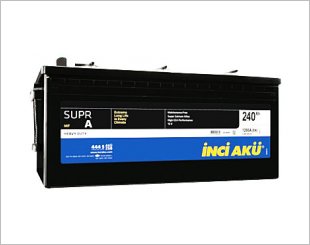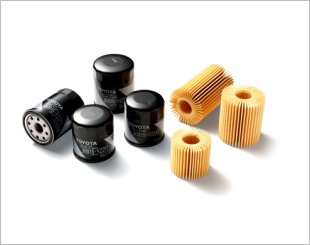inci Aku Super Special Bus Series batteries are specially designed for buses. They are long-lasting just like the rest of inci Aku products. Super Special Bus are ready-to-use and maintenance-free under normal conditions. In Super Special Bus Series batteries, negative plates are made of calcium while positive plates are made of antimony. Hybrid technology is involved to provide high performance. Glassmat separators provide extra resistance against lurches and shocks.
Features
- Calcium alloy plates
- Polyethylene envelope separators
- High charge-discharge cycle
- High acid reserve capacity above the plate
Benefits
- Ready-to-use
- Maintenance-free under normal conditions
- High starting power
- Resistance under challenging weather and road conditions
Storage & Installation
Wet Batteries
Always store in a dry and cool place in the upright position. (10°C to 25°C). Place batteries on a wood pallet for avoiding direct contact with concrete ground.
A) Check the Charge Level of your Battery Periodically (Every 3 months)
- Charge level of the battery must be greater than 12,6V before sale.
- During storage, the minimum voltage must be 12,4V. Otherwise, any lower voltage rate will result in sulphating of plates leading to reduced battery performance. For preventing any permanent damage, unpack the battery and charge at 16,1V and 1/20Cn current (1/20 of Ampere rate) without undue delay.
B) Employ FIFO (First-In First-Out) Method for your Inventories
The first batteries entered into the inventory are the first ones to be sold. Please check that the battery ensures the conditions ...
Read more [+]inci Aku Super Special Bus Series batteries are specially designed for buses. They are long-lasting just like the rest of inci Aku products. Super Special Bus are ready-to-use and maintenance-free under normal conditions. In Super Special Bus Series batteries, negative plates are made of calcium while positive plates are made of antimony. Hybrid technology is involved to provide high performance. Glassmat separators provide extra resistance against lurches and shocks.
Features
- Calcium alloy plates
- Polyethylene envelope separators
- High charge-discharge cycle
- High acid reserve capacity above the plate
Benefits
- Ready-to-use
- Maintenance-free under normal conditions
- High starting power
- Resistance under challenging weather and road conditions
Storage & Installation
Wet Batteries
Always store in a dry and cool place in the upright position. (10°C to 25°C). Place batteries on a wood pallet for avoiding direct contact with concrete ground.
A) Check the Charge Level of your Battery Periodically (Every 3 months)
- Charge level of the battery must be greater than 12,6V before sale.
- During storage, the minimum voltage must be 12,4V. Otherwise, any lower voltage rate will result in sulphating of plates leading to reduced battery performance. For preventing any permanent damage, unpack the battery and charge at 16,1V and 1/20Cn current (1/20 of Ampere rate) without undue delay.
B) Employ FIFO (First-In First-Out) Method for your Inventories
The first batteries entered into the inventory are the first ones to be sold. Please check that the battery ensures the conditions specified in Article A.
C) Battery Installation
- Before installation, make sure that battery to be installed in your car is correct by referring to operating manual of your car.
- Make sure that the engine is switched off.
- Remove the old battery first by releasing from the negative terminal cable, and then the positive terminal cable.
- When the vehicle engine is off, conduct a short-circuit control to make sure whether there is any electric consumption (conduct a leakage test).
- Clean the battery compartment and terminal connections by using a brush, and replace them if necessary.
- Install the new battery. Avoid tightening the bottom connections too tight. Before performing the connection, check the polarity starting from the positive cable. Clean the terminals using vaseline. Negative cable must always be connected in the end. Tighten the connections so that they are not loose.
- When the engine is on, check the compatibility of charge current by controlling the voltage at battery terminals. After installing the new battery in your car, gear up the vehicle in order to check whether the alternator voltage output rate specified in vehicle manual is compatible with the electric system.
Health & SafetySulphuric acid in the battery is very harmful.
Measures:
- Always carry the batteries carefully
- Always keep in the upright position
- Charge in a well-ventilated place
Do not add extra quantities of pure water. (Pure water level must not be more than 1.5 cm above the plates.) During battery maintenance (addition of water, cleaning, battery charge), absolutely wear protective goggles suitable with working conditions. In case of any possible acid splash risk, wear protective clothing.
Emergency:
- In case of contact with eyes or skin wash with plenty of water
- Immediately remove contaminated clothing
- Ingestion: Drink plenty of water and milk, consult a physician
- Spill: Wash small-spills with water
- Operating batteries emit highly flammable hydrogen and oxygen gases
- Do not smoke or avoid any sources and acts which may cause sparks near batteries which are being charged, operating on the vehicle, or stopped after a long operation period, keep fire away
- Use all devices with great care
Read less [-]











